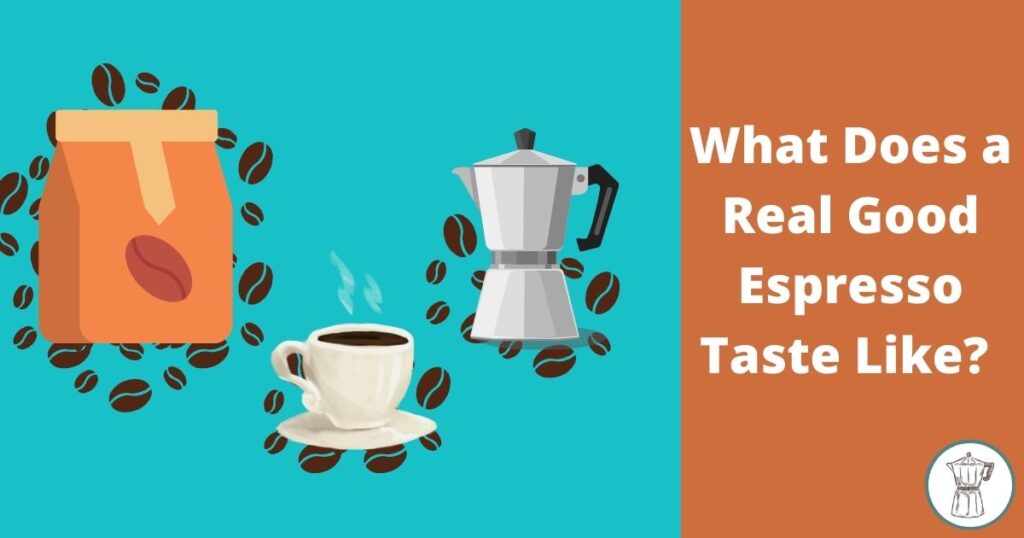Espresso is probably one of the most popular coffee drinks around, but what does a really good espresso actually taste like? In this blog post, we’ll take a closer look at this classic coffee drink and explore what makes a great espresso. Whether you’re a coffee enthusiast or just looking to expand your knowledge, read on to find out more about this delicious beverage.
A good espresso is made with the Arabica or Robusta beans, a fine grind and of course at the right temperature (200 °F /93 °C) and brewed at the right time (20-35 seconds). It also needs to have a nice crema on top that really adds to your brew.
What colour should a really good espresso be
The colour of an espresso is key.
The reality is that colour and the way a food dish or drink is presented make a whole difference. Having done this right, you have a way there to make a perfect espresso.
The right colour of a great espresso is dark brown, slightly lighter than black. The cream on top should be a lighter hue of brown. No matter how long you leave it sitting in the cup, the colour of your espresso won’t change, but the crema may disappear.
By just observing the colour you can tell whether your espresso is good.
3 factors that affect the taste of your espresso
Let’s go over these three factors that have an effect on the taste of your espresso.
Water
Did you know that almost 98% of your coffee is water?
As you can imagine water is key to making top espresso, as you don’t want water that’s rich in minerals and not acidic either. The best option to go for is either filtered water or even bottled water which typically contains less chlorine and acid that turn your espresso bitter.
You can check our guide on how to distil water with a coffee maker.
Pressure
If you’re using a Moka pot for brewing, you can skip this section.
One of the most vital things about brewing a really good espresso is the pressure of your machine used for brewing. You can find espresso machines between 7 to 15 bars of pressure (the higher the pressure of your machine the less time it needs to brew), but experts claim that you need a machine with 9 bars to brew espresso that just tastes fantastic. If not, you might brew bitter coffee that tastes like rubber.
So, I trust the experts and am planning to buy a 9-bar machine soon.
It’s also important to know how long to pre-infuse espresso.
Coffee bean Storage
I know what you’re thinking…
Although I’m stating the obvious here, this factor is often neglected by many and they just end up with espresso that tastes too bitter. To get the storage part right you’ll need a good jar with a lit that fits on the top properly. Keep your jar away from humidity and sunlight (ideally in a cupboard).
Store your coffee the right way and you’ll be sipping better espressos.
Espresso Crema
The crema on an espresso is often overlooked by many.
But the reality is you can tell by looking at the crema and the colour of an espresso shot whether is brewed properly or not. A good espresso has a proper layer of crema on top. Top baristas recommend using only freshly ground coffee to achieve crema.
Another top tip is to use blonde or medium roasts; the darker the roast the less your crema will be. If you’re using a Moka pot for making espresso, the odds are that you won’t make much crema; you need a good machine that warms up the water enough.
Its texture, known as mouthfeel, offsets the bold and intense taste of a properly brewed espresso.
Is espresso bitter or sweet?
A great espresso is bitter and has a tangy taste, this is because of the acidity level it contains. If your espresso is overly bitter it means that it’s brewed at a higher temperature than the recommended (200 °F /93 °C) or longer than 20-35 seconds, so the coffee grinds are burned and this spoils the brew.
Does espresso have a very strong taste?
Many find the taste of espresso strong, bold and intense and lead them to believe espresso isn’t good for us.
I can’t blame them; Italians typically drink it down in one go, this should make an espresso taste really strong…
But even when you have a couple of sips before you finish it you could feel that it has a strong taste. This leads to the belief that espresso is the strongest coffee out there which isn’t 100% right.
There are other coffees including Cafe Bustelo and Vietnamese coffee that are stronger.
What’s exactly the espresso flavour wheel?
Inspired by wine and beer tasting coffee professionals and particularly the SCA (Speciality Coffee Association) came up with the espresso flavour wheel to help professionals and coffee aficionados decide which coffee beans to opt for. (Do you think eating coffee beans gives you energy?)
It looks overwhelming at first glance with so many names and coffee terms written on it, but looking closely it makes more sense. Start from the middle where you’ll find these broad flavour groups:
- Veggie
- Spice
- Savoury
- Nutty
- Roasty
- Grain
- Sweet
- Chocolaty
- Fruity
- Floral
As you might have guessed these categories are associated with those on the end of the wheel. For example ‘dark chocolate’ and ‘bakers chocolate’ fall under the ‘Chocolaty’ category whilst ‘nutmeg’ and ‘cinnamon’ fall under the ‘Spice’ category.
How can you make an espresso taste sweeter?
If you find the taste of espresso too strong, luckily there is a bunch of ways to make your coffee taste sweeter. The most popular way to go about it is to add some sugar to it; you can either go for white, brown or even a sweetener and stevia. The calories per tbsp are mentioned below:
- white sugar: 60
- brown sugar: 35
- sweetener: none
- stevia: none
Let’s wrap it up
The aroma is floral with hints of dried fruit and nuts. The body should be medium-full with low acidity and a long finish. Now that you know how to make an espresso that tastes as it should, you have every good reason to make a proper good one at home.

- How to Remove Coffee Stains From Countertop The Easy Way - December 21, 2023
- Can You Reuse Coffee Grounds in French Press? Truth Inside - December 12, 2023
- Can Expired Coffee Creamer Make You Sick? 3 Ways to Find Out - December 9, 2023
